Hollywood Singing
and Dancing - the 1920s and 30s
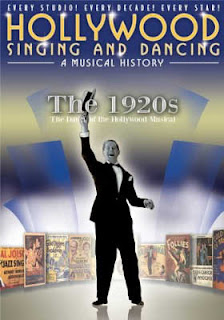
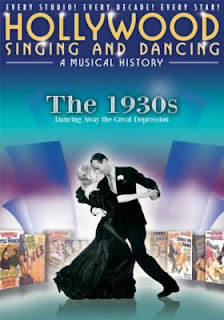
The 1920s
Director: Phillip Dye
Year: 2008
Rating: 7.0
Well this was
a nice find. I have been watching a number of musicals from 1929 - the year
the musical was created. This is a one-hour overview of the films and actors
who came out that year. Before the Jazz Singer in 1927 there were actually
many musical shorts being created - some 300 in total - and they were being
played before the feature films in theaters that were hooked up for sound.
It was one of those shorts that Al Jolson did in blackface that decided Warner's
to make a feature film with sound (or at least parts of it - Jazz Singer).
Jolson's next film The Singing Fool cinched it when it became a huge hit.
In 1929 some 70 musicals were produced. Very static at first, revues from
the studios bringing their actors on for a bit, the backstage musical with
Broadway Melody, a black musical with Hallelujah and then Lubitsch freed
the musical from its tethering's with the Love Parade. Initially, when actors
just broke into song in the middle of nowhere and music magically joined
them the audiences were perplexed but they got used to it. This documentary
with Shirley Jones narrating and a few talking heads adding their thoughts
touched on a number of films and actors I had never heard of. Many of the
actors disappeared or went back to Broadway fairly quickly - many of the
films are lost. But some great clips are shown and then there is a bonus
disc that has a few of these early shorts. One with Duke Ellington titled
Black and Tan Fantasy is very interesting. This is a part of a series that
covers each decade up to the 1970s I believe.
Hollywood Singing
and Dancing: A Musical History – the 1930s
Director: Phillip Dye
Year: 2009
Rating: 7.5
This is the second in a series of films
about the American musical by decade. The first one - the 1920's - obviously
only consisted of one year when the Talkies came in but there was a slew
of musicals produced in 1929. Most of the films were musicals in fact or
at least had a musical number or two. It was a huge splash. Looking at them
now, many are very clunky, stage bound, static and often nothing but songs
with no plots. But you could also see that as technology improved so did
the musical. Lubitch's the Love Parade managed to overcome the technical
limitations, Sunny Side Up with Janet Gaynor won your heart and The Broadway
Melody that received the Oscar for Best Picture that year pointed towards
the extravaganzas that musicals were to become. But there were so many musicals
being made that the audience started staying away and they got a reputation
as box office poison. Then along came Busby Berkeley and 42nd Street in 1933.
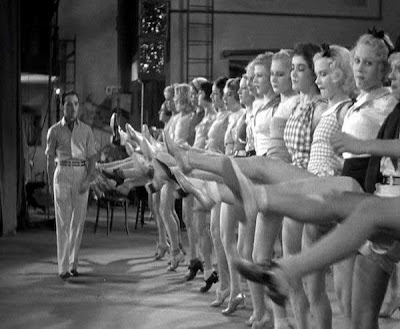
To me the musical is the most American of
all the film genres. Noir close. But nowhere else could they make musicals
like in America and have so much talent. And the studio system that could
train talent, nourish it and market it. For three decades musicals were huge.
And then they weren't. Not sure why. The death of the studios was part of
it I expect. Musicals also tend to be innocent and optimistic and by the
1960's maybe America didn't feel that way as films got edgier, more violent
and sexual and musicals just were not made for those times. In the 1930's
mop-top Shirley Temple was the biggest star in Hollywood. Can you imagine
that being the case in the 1960's or today. A few are still being made and
though some have done quite well such as La La Land, they have not been able
to bring back the musical.
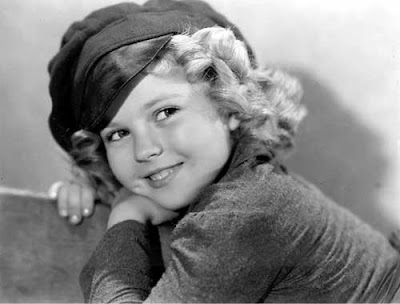
There could be a debate about whether the
musicals from the 1930s or 1940s were better. The 40's are generally considered
the Golden Age of musicals - they were usually done in color, had a lot of
razzle dazzle and MGM had a unit that did only musicals and produced one
classic after another. But I think I prefer the musicals of the 1930's. There
was so much talent coming out of vaudeville and Broadway. Berkeley as a choreographer
and director re-invented the musical with big sparkling numbers and his fabulous
geometrical patterns shot from above or below - showcasing one slender pair
of legs after another. He would tell the studio, get me every girl with nice
legs in Hollywood. In the war he had actually been a drill sergeant and he
brought that same precision and eye for formations to his choreography. He
had one hit after another in the 30's and made Dick Powell, Ginger Rogers.
Joan Blondell and Ruby Keeler into stars. But there wasn't a lot of individual
dancing in his films. He preferred the big set pieces. But that is where
Fred Astaire came in.
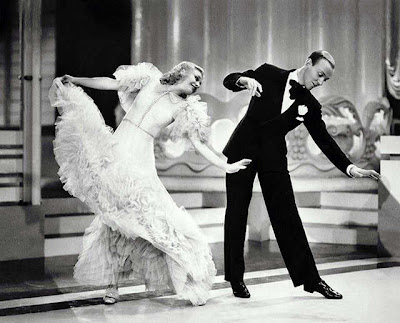
Astaire had been a huge hit on stage dancing
with his sister. He tried out for Hollywood and danced with Joan Crawford
in Dancing Lady in 1933. Well enough that RKO gave him a secondary role as
the funny guy in Flying Down to Rio. They also gave him Ginger Rogers. They
are not the focus of the film, but they have a big dance number near the
end that wow'ed people and they were paired up in a series of big hits through
the 30's. Astaire insisted on being filmed so that his entire body could
be seen, no close-ups, few cuts - just his elegance and ease. Night and Day
with Rogers is pure Astaire - perhaps the most romantic musical number ever.
But as I mentioned above the biggest musical star was Shirley Temple who
saved Fox from going bankrupt. After a number of shorts starting when she
was four to being the lead in films beginning when she was 6 years-old, she
was the tonic that America needed in the Depression. FDR said "As long as
we have Shirley Temple, America will be fine." And then she got older and
the studio no longer had any use for her. That's Hollywood. Another young
star Deanna Durbin who MGM let go (preferring Garland) ended up saving Universal
with a series of musicals. Her operatic voice and cheery smile were incredibly
popular. She walked away from Hollywood before they let her go.
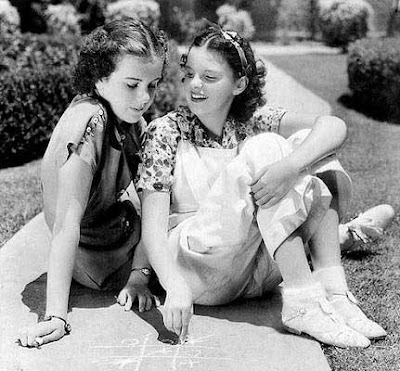
There were so many more who were stars -
every studio had a few. The studios also had the greatest song writers ever
working for them - Berlin, Porter, the Gershwins, Rogers and Hammerstein
and Hart, Kern, the Tin Pan Alley boys. Other stars were Jeanette MacDonald,
Maurice Chevalier, Eleanor Parker, Alice Faye, Judy Garland, Mickey Rooney
(when Orson Welles was asked who were the three most talented people in Hollywood,
he answered Rooney, Rooney and Rooney), Betty Grable, Bing Crosby, Al Jolson
and many others. Of course, most of them continued into the 1940s and added
stars such as Gene Kelly, Rita Hayworth, Mitzi Gaynor, Cyd Charisse, Frank
Sinatra. This documentary covers all of these stars and has clips of many
films with a few smart talking heads. This is the sort of thing that I can
watch for hours. Two hours long.







